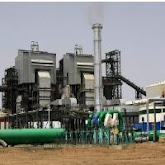The process of making sugar by GangaKhed Sugar
As a sweetener for food and beverages and a source of energy for our bodies, sugar is essential to our daily life. Our bodies use sugar, a type of carbohydrate, to make glucose, which gives us the energy we need for each day's activities.
It's crucial to remember that consuming too much sugar can have harmful health impacts, including weight gain and a higher chance of developing diabetes and other chronic diseases. Consuming sugar in moderation is important, as it is with most things. It's crucial to pay attention to how much sugar we're ingesting and try to cut back if required.
Ratnakar Gutte's GangaKhed Sugar, which uses cutting-edge and effective sugar production methods in GSEL Maharashtra, has made headlines. The business takes pleasure in using sustainable practises and making use of every component of the sugarcane plant, including bagasse, which is utilised as fuel. GangaKhed Sugar produces high-quality sugar that complies with FSSAI regulations. The production of sugar is essential to the economy and to the food sector since it provides an essential element for many foods and beverages that are eaten all over the world.
Overall, GangaKhed Sugar's sugar is a crucial component of our everyday life since it gives us energy and improves the flavour of our food and beverages. However, it's important to prioritise a healthy, balanced diet and eat sweets in moderation.
Having said that, have you ever considered the journey that sugar takes to get to your taste buds? We'll go over each step of the procedures used to make sugar in this blog.
1. Harvest
Harvesting is obviously the first stage in the production of sugar. First, all of the raw sugar ingredients, including sugarcane and sugarbeets, are hand gathered from the fields. Before continuing, it is made to go through a number of sifting procedures to remove all the rock and dirt particles.
2. Preparations and cleaning
Everything that will be eaten needs to be thoroughly cleansed. Similar to this, the sugarcanes and sugarbeets are thoroughly washed with water after they arrive to the GangaKhed Sugar Factory. Water spraying or revolving drums serving as water stations are two common procedures. The items spin inside the drums as water is sprayed on them in the same procedure.
The sugar cane or sugar beets are brought into the factory using either screws or belts after they have been fully cleansed. After that, sugar cane is crushed using swing-hammer shredders or rollers with deep grooves, while sugar beets are thinly sliced using slicing equipment. The strips are then submerged in hot water while hot water is sprayed or sprinkled over the crushed sugar cane. In preparation for the extraction process, these mechanisms cause the plant cells to expand.
3. Extracting juice
Sugar beets are sliced into cossettes while sugar cane is crushed using swing-hammer shredders or rollers with deep grooves. The sugar cossettes are pumped into the bottom of tall tanks during the juice extraction process, and the sugar is then extracted by rotating the shaft in the centre of the tank. Five different mills are used to crush the sugar cane fibres and separate the juice from the bagasse in sugar cane.
4.Purification
The extraction of juice is followed by its purification in the procedure. The sugar juice that is obtained from the preceding process is acidic and a little bit dark, according to Ganga Khed Sugar news. Sugar beets are chopped using slicing machines, which split them into strips known as cossettes, while sugar cane is squeezed using heavily grooved crusher rollers. The sugar cossettes are pumped into the bottom of tall tanks during the juice extraction process, and the sugar is then extracted by rotating the shaft in the centre of the tank. Five different mills are used to crush the sugar cane fibres and separate the juice from the bagasse in sugar cane.
5. Crystallisation
The clarified juice is then heated in a series of vacuum evaporators until the sugar content is between 50% and 65%. It creates a sugar syrup that is thick, practically colourless, and crystallised in a single stage using a vacuum pan. The massecuite, a thick concoction of syrup and sugar crystals, is then put into a huge vessel known as a crystalliser. As the massecuite cools and is gradually agitated, the crystallisation process is continued.
6.Centrifugation.
The massecuite is placed into a high-speed centrifuge with a perforated metal cylindrical basket that spins at a speed of 1,000 to 2,800 revolutions per minute in order to separate the final products, sugar crystals and molasses. While the sugar is kept in the lined centrifuge basket during centrifugation, the molasses is attracted to the exterior of the centrifuge and transported to storage tanks. The sugar crystals are then tumbled via heated air in granulators after drying in enormous hot air dryers till their moisture content is as low as 0.02%. The dried crystals are then divided into various sizes using vibrating screens before being packaged for the consumer.

Comments
Post a Comment